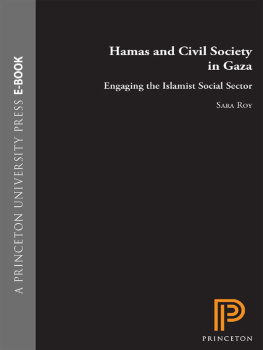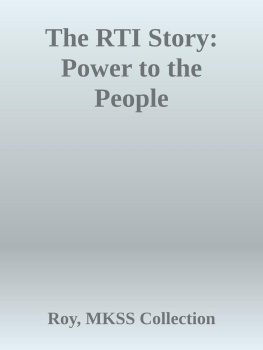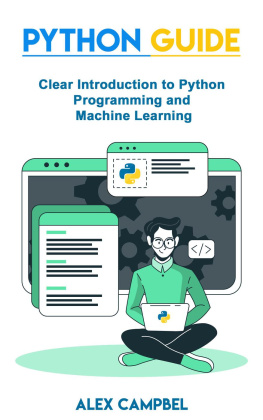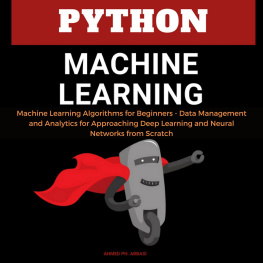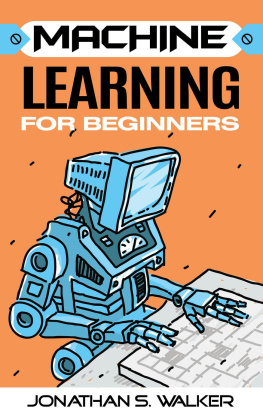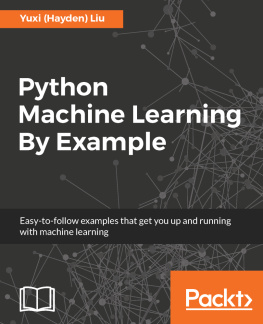Python Machine Learning
A Beginners Guide to Python Programming for Machine Learning
Michael Roy
Table of contents
Introduction
Chapter 1: Machine Learning: A Brief History
Donald Hebb - The Organization of Behavior
Samuel Arthur - Neural Networks, Checkers and Rote Learning
Rosenblatts Perceptron
Marcello Pelillo - The Nearest Neighbor Algorithm
Perceptrons and Multilayers
Going Separate Ways
Robert Schapire - The Strength of Weak Learnability
Advancing into Speech and Facial Recognition
Present Day Machine Learning
Chapter 2: Fundamentals of Python for Machine Learning
What is Python?
Why Python?
Other Programming Languages
Effective Implementation of Machine Learning Algorithms
Mastering Machine Learning with Python
Chapter 3: Data Analysis in Python
Importance of Learning Data Analysis in Python
Building Predictive Models in Python
Python Data Structures
Python Libraries for Data Analysis
Chapter 4: Comparing Deep Learning and Machine Learning
Deep Learning vs Machine Learning
Problem Solving Approaches
Different Use Cases
Chapter 5: Machine Learning with Scikit-Learn
Representing Data in Scikit-Learn
Features Matrix
Target Arrays
Estimator API
Supervised Learning in Scikit-Learn
Unsupervised Learning in Scikit-Learn
Chapter 6: Deep Learning with TensorFlow
Brief History of TensorFlow
The TensorFlow Platform
TensorFlow Environments
TensorFlow Components
Algorithm Support
Creating TensorFlow Pipelines
Chapter 7: Deep Learning with PyTorch and Keras
PyTorch Model Structures
Initializing PyTorch Model Parameters
Principles Supporting Keras
Getting Started
Keras Preferences
Keras Functional API
Chapter 8: Role of Machine Learning in the Internet of Things (IoT)
Fusing Machine Learning and IoT
Machine Learning Challenges in IoT
Chapter 9: Looking to the Future with Machine Learning
The Business Angle
AI in the Future
Conclusion
Introduction
The notice of engineers and programming, as a rule, has many individuals guiding their musings to the more extensive investigation of software engineering. Software engineering is a wide space of study. In AI, PCs gain for a fact, helped by calculations. To help their motivation, they should utilize the information with explicit highlights and characteristics. This is how they recognize designs that we can use to help in settling on significant choices. In AI, tasks are gathered under various classifications, like prescient demonstrating and bunching models. The idea driving AI is to give answers for appropriate issues without fundamentally hanging tight for direct human association.
AI and man-made consciousness today is the truth that we longed for years prior. These ideas are not, at this point kept to anecdotal thoughts in motion pictures, however, they have become the foundation of our day-by-day lives. If you consider your web movement all as the day progressed, you connect with AI models constantly. How often have you had a site interpreted from an unknown dialect to your local language? Consider the occasions you have been helped through a chatbot, or utilized facial and voice acknowledgment programs. All these are occasions where we cooperate with AI models, and they help by making our lives simpler.
Like some other order, AI doesn't exist in disengagement. Numerous ideas in AI are entwined with profound learning and man-made consciousness. Different subjects share similitudes with AI, yet with the end goal of this book, we will zero in on profound learning and man-made consciousness.
This being the primary book in a progression of illuminating books about AI, will acquaint you with the essential philosophies you ought to comprehend the innovation, frameworks, and methodology utilized in AI, also, how they are associated.
Man-made consciousness diverges from AI, however, they share a lot of similitudes. Following these two investigations back on schedule, they share a similar way for the majority of their set of experiences. While AI centers around building models that learn through calculations and can work without human intercession, man-made consciousness centers on reproducing human encounters and knowledge through processing. It is protected to say that AI is a subclass of man-made brainpower since we run after building machines that can reenact human dynamic cycles, though by learning through information.
Profound learning acquaints us with another division of AI where fake neural organizations (ANN) are utilized in settling on significant choices. In profound learning, the neural organizations utilize layered designs whose capacities are like the elements of a solid human cerebrum. Thusly, AI, profound learning, and computerized reasoning are three teaches that are interconnected in a bigger number of ways than one. At the point when you focus on learning one of them, you will coincidentally need to find out about the others too eventually.
In AI, profound learning is a class that centers on utilizing calculations to enable frameworks and assemble models that are comparative inactivity to the human cerebrum. The current fervor and promotion around profound taking incomes from the major examinations in neural organizations. Examination in neural organizations has been completed for a long time and could go back longer than the historical backdrop of AI. This is because a piece of this information is inserted in neurological investigations without a bit of reference to AI or processing.
There have been significant steps in AI research throughout the long term, particularly concerning profound learning. While we should perceive the versatility of these controls, the progression in these advances is made conceivable by three significant elements; the improvement of productive calculations, the expanding and coordinating with interest for critical registering assets, and the expansion in the web populace, thus enormous pieces of information are accessible to prepare and engage these machines.
So how would we discover the connection between profound learning and AI? The appropriate response lies in how these models work. From a fundamental viewpoint, you work with models which get predefined info and yield information. Information could be anything from text directions to mathematical information, or sound, video, and pictures in various media designs. Given the info, the particular model you use will at that point determine a yield that meets your guidelines. Yield could be anything from distinguishing a person's name to characterizing their clan. The right answer relies upon the sort of info information you give the AI model.
As you find out about these organizations, you should likewise save time to hone your information examination and information taking care of abilities. One ability you should be acceptable at is how to plan information, particularly how to clean information. Machine and profound learning models rely upon the information for exactness. Errors in the information will influence the yield. Numerous slip-ups occur in the information section and if these are not checked, you will wind up with a decent AI model that can't convey the result anticipated. This is the reason information cleaning, and information examination when all is said in done, are significant cycles.
When your model has adequate information, it ought to foresee results as per the info gave and the guidelines whereupon the model trains. Today many AI models are now being used, including TextCNN, YOLO, Inception, and FaceNet.



